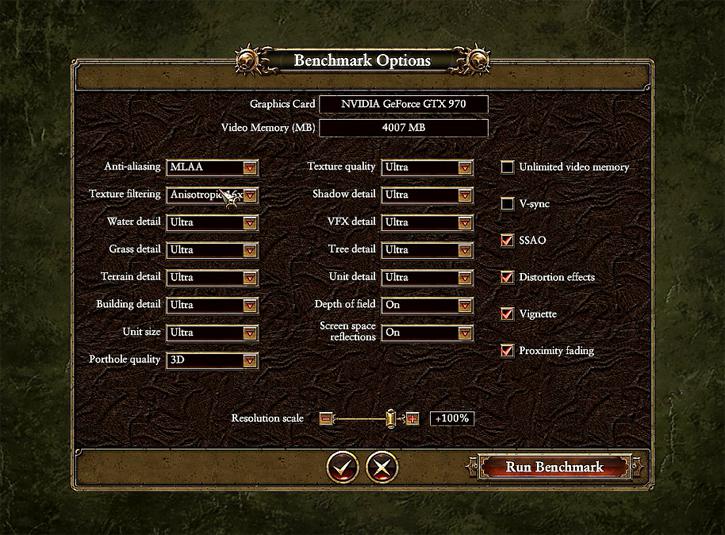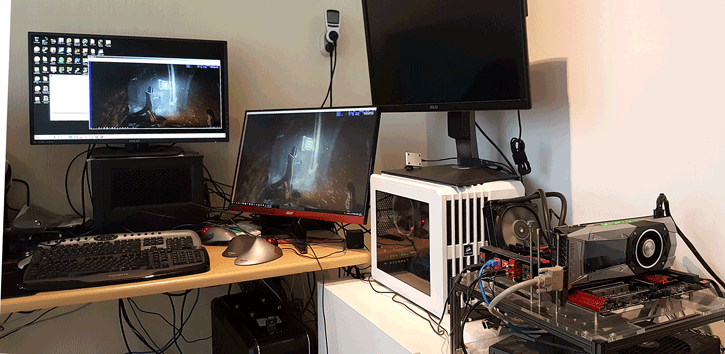Image quality settings and benchmark system
Image quality settings and benchmark system
Before we begin with the graphics performance tests a little explanation. We use a time based measurement based upon the internal benchmark this title offers. These are some of the available in-game quality settings options. We simply flick the best quality settings and disabled VSYNC. Games typically should be able to run in the 40 FPS range combined with your monitor resolution. From there on-wards you can enable/disable things if you need-more performance or demand even better game rendering quality.
MorphoLogical Anti-Aliasing
I wanted to write a note in this article about using MLAA. MLAA is an acronym for MorphoLogical Anti-Aliasing. MLAA is a shape-based anti-aliasing method that uses post processing filters to reduce aliasing. Like the SSAO, MLAA can be hand-coded in a 3D app or added in graphics drivers. The Benchmark version of the game was provided to us by AMD, the game is an Gaming Evolved title. I found it to be surprising that in the Anti-aliasing options of the benchmark, MSAA is nowhere to be found (disabled). Either you disable AA or use MLAA, these are the only options. MLAA for AMD is what if FXAA for Nvidia. MLAA is way more optimized for AMD opposed to Nvidia and that works out really well for them, especially for the mainstream cards. You could state that this is a somewhat 'favored' option that the game-title is forcing us to use. So again, AMD will yield better results from MLAA but in retrospect, over the years Nvidia cold have optimized this technology a bit more in their advantage.
You can select various quality settings. Take a good look at our settings which we can recommend for the best PC experience. Max. detail incl. MLAA, 16:1 HQ-AF; Direct X 12 based on Windows 10 x64, Geforce 368.22 and 368.25 for Pascal. AMD cards have been tested with the latest Radeon Software 16.5.3 driver.
The graphics cards tested
- GeForce GTX 780 Ti
- GeForce GTX Titan
- Radeon R9 370 (4GB)
- Radeon R9 280X
- GeForce GTX 960 (2GB)
- Radeon R9 285 (2GB)
- Radeon R9 380 (2GB)
- Radeon R9 380X
- GeForce GTX 970
- GeForce GTX 980
- Radeon R9 390
- Radeon R9 390X
- Radeon R9 Nano
- Radeon R9 Fury
- GeForce GTX 980 Ti
- GeForce GTX Titan X
- GeForce GTX 1070
- Radeon R9 Fury X
- GeForce GTX 1080
- GeForce GTX 780 Ti
- GeForce GTX Titan
- Radeon R9 370 (4GB)
- Radeon R9 280X
| Graphics card | Graphics Core Next Architecture | DirectX feature level |
|---|---|---|
| Radeon HD 7000 series | GCN 1.0 | DX12, feature level 11_1 |
| Radeon HD 7790 | GCN 1.1 | DX12, feature level 12_0 |
| Radeon R7 260 (X) &360 | GCN 1.1 | DX12, feature level 12_0 |
| Radeon R9 270 (X) & 370 | GCN 1.0 | DX12, feature level 11_1 |
| Radeon R9 280 (X) | GCN 1.0 | DX12, feature level 11_1 |
| Radeon R9 285 & 380 | GCN 1.2 | DX12, feature level 12_0 |
| Radeon R9 290 & 290 (X) | GCN 1.1 | DX12, feature level 12_0 |
| Graphics card | DirectX feature level |
|---|---|
| GeForce 900 Series (Maxwell 2.0) | DX12, feature level 12_1 |
| GeForce 700 Series (Maxwell 1.0) | DX12, feature level 11_0 Partial feature level 11_1 support |
| GeForce 700 Series (Kepler) | DX12, feature level 11_0 Partial feature level 11_1 support |
| GeForce 600 Series (Kepler) | DX12, feature level 11_0 Partial feature level 11_1 support |
| GeForce 500 Series (Fermi) | DX12, feature level 11_0 Partial feature level 11_1 support |
| GeForce 400 Series (Fermi) | DX12, feature level 11_0 Partial feature level 11_1 support |
System Specifications
Our test system is based on the eight-core Intel Core i7-5960X Extreme Edition with Haswell-E based setup on the X99 chipset platform. This setup is running 4.40 GHz on all cores. Next to that we have energy saving functions disabled for this motherboard and processor (to ensure consistent benchmark results). We use Windows 10 all patched up. Each card runs on the same PC with the same operating system clone.
- GeForce cards use the latest 368.22 driver (download drivers).
- Radeon graphics cards we used the latest AMD Radeon Crimson 16.5.3 Driver (download drivers).



